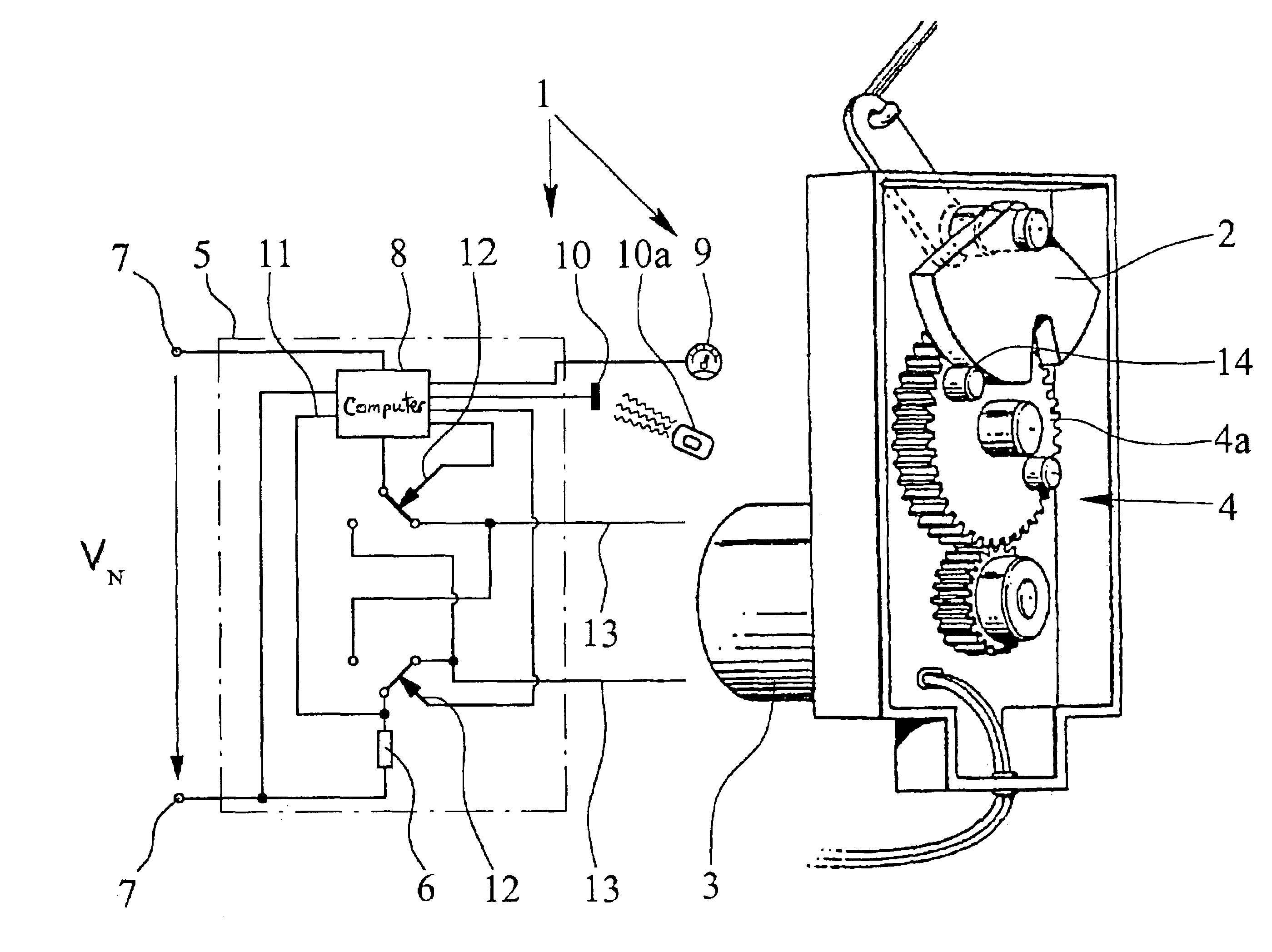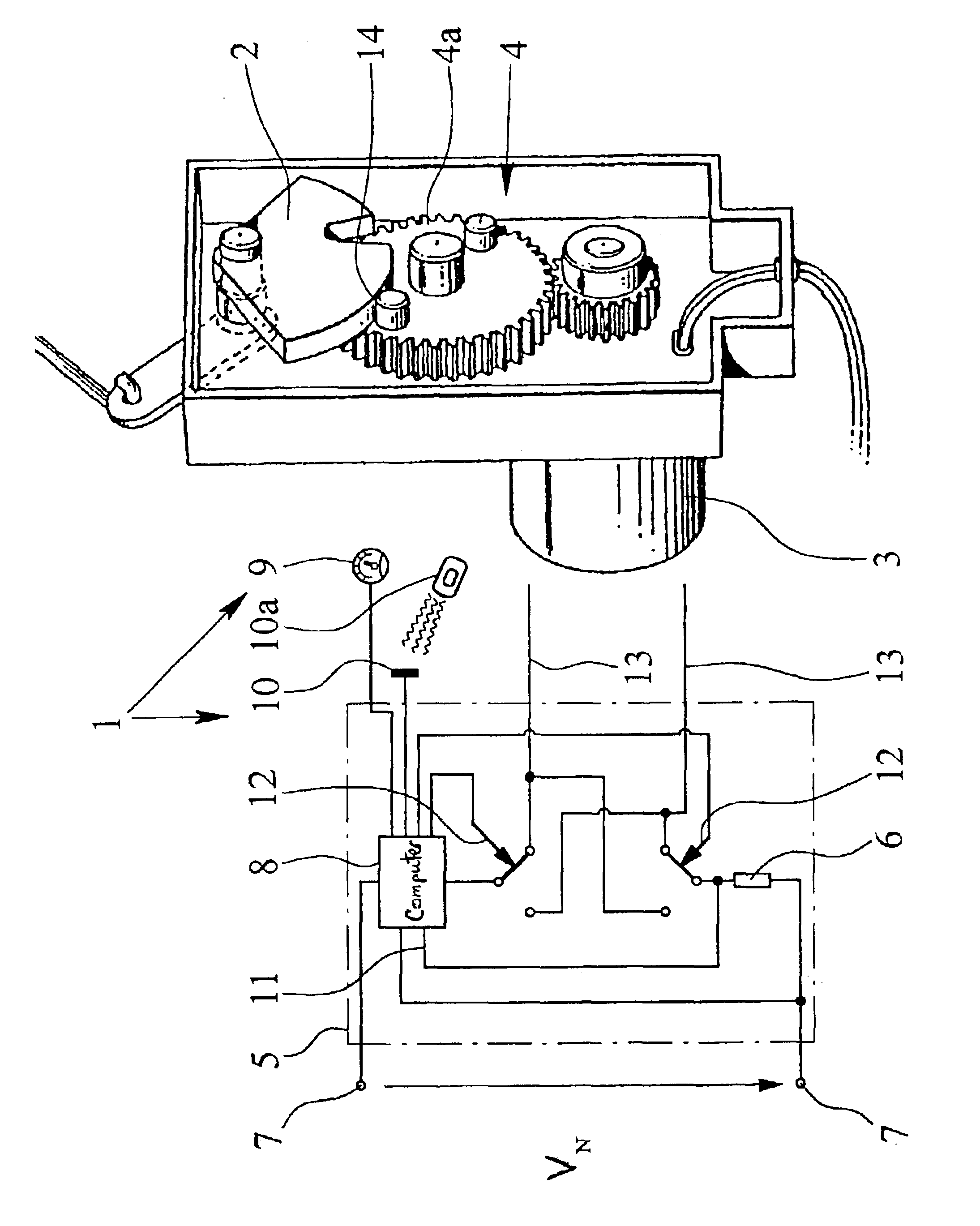Motor vehicle door lock with an electromechanical central locking system drive
a technology of electromechanical and central locking system, which is applied in the direction of motor/generator/converter stopper, dynamo-electric converter control, lock application, etc., can solve the problems of inherently too fast and powerful central locking system drive, insufficient block current limitation,
- Summary
- Abstract
- Description
- Claims
- Application Information
AI Technical Summary
Benefits of technology
Problems solved by technology
Method used
Image
Examples
Embodiment Construction
[0025]Some explanations to which reference should be made here can be found in the Background part of the specification pertaining to the basic structure of a motor vehicle door lock with a central locking system drive, to which the teaching of this invention relates.
[0026]The teaching of the invention relates to a motor vehicle door lock with an electromechanical central locking system drive 1 and a mechanical central locking system element 2 which is driven by it. In the embodiment shown in the FIGURE, the central locking system drive 1 has an electric drive motor 3 which drives the mechanical central locking system element 2, which is made here as a pivot lever, via a step-down gear, which is made here as toothed gearing 4. There are a host of other structures for electric drive motors 3 with step-down gearing 4, for example, a worm gear pair, spur / bevel wheel gear, and partially coupled to it, spindle / spindle nut gear. Reference should be made to the prior art in this regard, wh...
PUM
 Login to View More
Login to View More Abstract
Description
Claims
Application Information
 Login to View More
Login to View More - R&D
- Intellectual Property
- Life Sciences
- Materials
- Tech Scout
- Unparalleled Data Quality
- Higher Quality Content
- 60% Fewer Hallucinations
Browse by: Latest US Patents, China's latest patents, Technical Efficacy Thesaurus, Application Domain, Technology Topic, Popular Technical Reports.
© 2025 PatSnap. All rights reserved.Legal|Privacy policy|Modern Slavery Act Transparency Statement|Sitemap|About US| Contact US: help@patsnap.com


